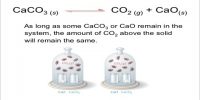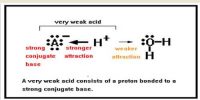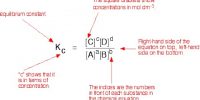According to Le Chatelier’s Principle, if a system at equilibrium is subjected to a disturbance or stress, then the equilibrium shifts in the direction that tends to nullify the effect of the disturbance or stress. Let us consider the effects of changes in temperature, concentration and pressure, on the equilibrium reactions and the predictions of Le Chatelier’s principle.
Effect of change of concentration
Consider the following equilibrium reaction
N2 (g) + O2 (g) ↔ 2NO(g)
At the equilibrium conditions, the reaction mixture contains both the reactant and product molecules, that is, N2, O2 and NO molecules. The concentrations of reactant and product molecules are constant and remain the same as long as the equilibrium conditions are maintained the same. If a change is imposed on the system by purposely adding NO into the reaction mixture then the product concentration is raised. Since the system possesses equilibrium concentrations of reactants and products, the excess amount of NO react in the reverse direction to produce back the reactants and this results in the increase in concentrations of N2 and O2. Similarly, if the concentration of reactants such as N2 and O2 are purposely raised when the system is already in the state of equilibrium, the excess concentrations of N2 and O2 favour forward reaction. The concentration of NO is raised in the reaction mixture.
In general, in a chemical equilibrium increasing the concentrations of the reactants results in shifting the equilibrium in favour of the products while increasing the concentrations of the products results in shifting the equilibrium in favour of the reactants.













